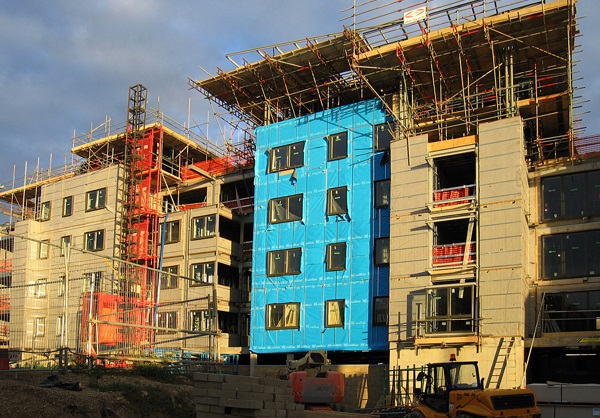Top 5 construction project planning tips
Contents |
[edit] Introduction
It can be a big multi-million-pound project or a small extension to a domestic property. It can be a multinational client or a domestic client looking to you to build their new home on time and on budget.
Irrespective of the size of the project, there are common issues that can beset a construction project. Here are five tips for keeping any construction project on track.
[edit] 1. Communicate, communicate, communicate
It seems the way to emphasise the solution is to keep saying it and when it comes to any construction project, clear communication is key. The majority of issues that crop up on building projects is the ‘I thought that is what you wanted?’ conversation.
It may be that you think you are communicating and that you think you understand what the client wants and vice versa, but this is not always the case. The same is true when communicating with other companies and skilled trades people.
The solution?
Consider using a collaborative work management tool in which comments and feedbacks are synced, along with any documents and changes to the workflow calendar. Choose a program that operates in real time so that everyone is informed immediately when something is changed or added to the platform.
[edit] 2. Continuous planning
The role of the project manager is to coordinate and pull everything together. They are the lynchpin therefore, as the project manager you need to be continually planning. This planning process starts way before the build begins and continues throughout, with constant revision.
As each stage of your build unfolds, you need to be reviewing and revising what happens next, making adjustments as and when necessary. But there is a balance that needs to be struck. Too many revisions will begin to affect the budget and the timing of the project.
You may be working with seasoned professionals who have decades of experience but they may still require focus and direction on your project.
The solution?
Set key developments landmarks in your planning and as you reach these points, concentrate on the next section in detail but look forward to see how any changes and adjustments will affect future plans.
[edit] 3. Observe and ask questions
Whether you are undertaking project management for your own domestic project or are a professional project manager, you will spend little time sat at a desk (or you should spend little time at your desk!).
This is because you need to be at the build. You need to witness and experience what is happening, where the problems are and so on. This observation helps you to understand why your project is not making the progress it should be or why the great idea of paper for a certain component is not translating into reality.
The solution?
Be intimately familiar with the construction site and who everyone is. Understand who are the key players of all the trades and companies on site and more importantly, make sure you ask questions.
[edit] 4. Budgetary tools
As well as leaking time, a building project can leak money too. At the start of the project, it can feel like you have a large pot of cash at your disposable and yet, less than half way through, more than half of the project has been spent. Just like you will continually be revising the timetable and work schedule, you should be constantly monitoring spend on the project.
There will be times when all you seem to do is buy raw material and resources and other times when the main cost is wages and invoices for skilled tradespeople. It can be complex and a fast-moving part of your project but it is essential you have a continual stream of up to date financial information.
The solution?
Just like scheduling and planning your project, manually monitoring the budget is time-consuming and not feasible. A monitoring tool for costs and budget is essential, allowing you to piece together the many pieces of the project. There are many programs and software applications that make managing the budget easier, producing vital information in real time too.
[edit] 5. Automated reporting system
In any build, from the smallest to the largest construction projects, there are many small pieces that all need to come together. Spreadsheets, signing invoices, status reports and budget updates are all important pieces of information.
But here’s the thing, not everyone needs every bit of this information. Some people will need the updated weekly schedule whilst others will need a budget update too, and so on and so forth. Swamping people with information and reports means they can be swamped with information that is useless to them…
The solution?
Produce reports with an automated reporting system that allows the right information to reach the right people and at the right time. Don’t forget that real time is important because the information that is ‘old’ is of no use if the project is barrelling along toward completion.
[edit] Find out more
[edit] Related articles on Designing Buildings Wiki
- Code of practice for project management.
- Code of practice for programme management.
- Commercial management.
- Commercial manager.
- Conceiving construction plans.
- Construction project manager - morning tasks.
- Interview with Stephen Trench - Project manager.
- Project manager.
- Project monitoring.
- Project plans for building design and construction.
Featured articles and news
Government consultations for the summer of 2025
A year of Labour, past and present consultations on the environment, the built environment, training and tax.
CMA competitiveness probe of major housing developers
100 million affordable housing contributions committed with further consultation published.
Homes England supports Greencore Homes
42 new build affordable sustainable homes in Oxfordshire.
Zero carbon social housing: unlocking brownfield potential
Seven ZEDpod strategies for brownfield housing success.
CIOB report; a blueprint for SDGs and the built environment
Pairing the Sustainable Development Goals with projects.
Types, tests, standards and fires relating to external cladding
Brief descriptions with an extensive list of fires for review.
Latest Build UK Building Safety Regime explainer published
Key elements in one short, now updated document.
UKGBC launch the UK Climate Resilience Roadmap
First guidance of its kind on direct climate impacts for the built environment and how it can adapt.
CLC Health, Safety and Wellbeing Strategy 2025
Launched by the Minister for Industry to look at fatalities on site, improving mental health and other issues.
One of the most impressive Victorian architects. Book review.
Common Assessment Standard now with building safety
New CAS update now includes mandatory building safety questions.
RTPI leader to become new CIOB Chief Executive Officer
Dr Victoria Hills MRTPI, FICE to take over after Caroline Gumble’s departure.
Social and affordable housing, a long term plan for delivery
The “Delivering a Decade of Renewal for Social and Affordable Housing” strategy sets out future path.
A change to adoptive architecture
Effects of global weather warming on architectural detailing, material choice and human interaction.
The proposed publicly owned and backed subsidiary of Homes England, to facilitate new homes.
How big is the problem and what can we do to mitigate the effects?
Overheating guidance and tools for building designers
A number of cool guides to help with the heat.
The UK's Modern Industrial Strategy: A 10 year plan
Previous consultation criticism, current key elements and general support with some persisting reservations.
Building Safety Regulator reforms
New roles, new staff and a new fast track service pave the way for a single construction regulator.


























